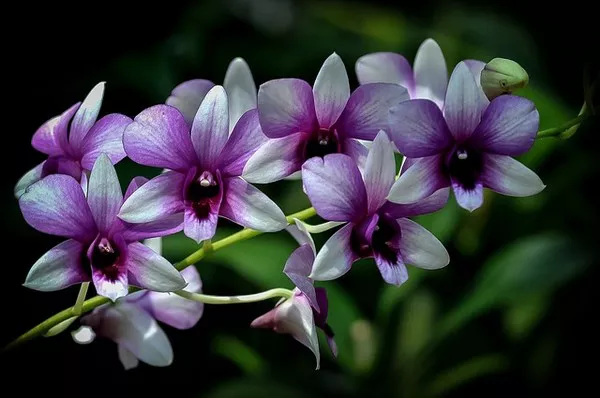A recent study published in the Botanical Journal of the Linnean Society has unveiled the remarkable diversity of specialized pollination tactics employed by orchids across the globe. This revelation comes from a newly published database containing data on nearly 2,900 orchid species, shedding light on their pollinators, attraction mechanisms, and revealing patterns in reproductive biology concerning habitat, geography, and taxonomy.
Orchids, known for their elaborate and often unconventional pollination strategies, have long fascinated scientists and played a pivotal role in advancing our understanding of floral adaptations to pollinators. The study explores the intriguing world of orchid pollination, which includes both deceit and reward-based mechanisms.
Key findings from the database and study include:
Orchid Dependence on Pollinators: Over 75% of orchid species are reliant on pollinators for their reproduction, emphasizing their vulnerability to factors affecting pollinators.
Deceptive Orchids: Nearly half of the orchid species studied (46%) employ deceit rather than providing rewards to attract pollinators. Deceptive strategies range from mimicking food sources to sexually deceiving pollinators through visual, tactile, and olfactory signals.
Specialization: Orchids often specialize in attracting a single primary pollinator species, regardless of their habitat or geographic location. This specialization makes them susceptible to threats, including climate change, as they depend on specific pollinators for reproduction.
Global Orchid Pollination: The study highlights variations in orchid pollination strategies across different regions of the world, revealing that Australasia and Africa have 15% and 20% coverage of their orchid diversity, respectively, while Temperate Asia, Tropical Asia, and South America are underrepresented in orchid pollination studies.
Reward Mechanisms: Among the orchid species that offer rewards to pollinators, 51% produce nectar, 24% are pollinated by insects collecting floral fragrances, and 15% produce floral oils. Other rewards include trichomes (food hairs), pseudopollen, resins, pollen, or sleep sites.
Common Pollinators: Wasps and bees are the most common types of pollinators for orchids, followed closely by flies and mosquitoes.
Data Gaps: Despite the extensive database, it covers less than 10% of the orchid family. Tropical regions in Africa, South America, and Asia, which are centers of orchid diversity, are notably underrepresented in orchid pollination studies, especially among epiphytic orchids.
The study emphasizes that orchid pollination research not only provides valuable insights into unique and bizarre pollination strategies but also aids in understanding how flowering plants adapt to attract pollinators. Additionally, it underscores the conservation implications, as many orchid species rely on specific pollinator species for their survival.
This study not only showcases the captivating world of orchid pollination but also highlights the importance of continued research in this field to uncover new strategies and adaptations, particularly in regions where orchid biology remains relatively unexplored.


